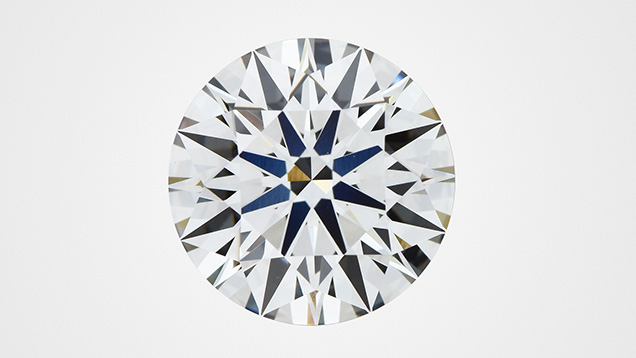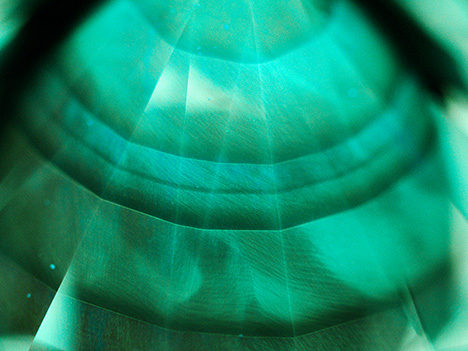CVD Laboratory-Grown Diamond with Counterfeit GIA Inscription

In recent months, GIA has seen a number of laboratory-grown diamonds submitted for update or verification services with counterfeit inscriptions referencing GIA natural diamond reports (“GIA laboratory prevents attempted fraud,” GIA press release, May 17, 2021, https://www.gia.edu/gia-news-press/gia-lab-prevents-attempted-fraud). One recent example is a 3.07 ct round brilliant submitted to the Antwerp lab for update service (figure 1). It bore an inscription matching a GIA report for a natural diamond that had been submitted in 2018. Microscopic examination quickly revealed, however, that the inscription was in fact fraudulent. Further analysis indicated a laboratory-grown origin.

Comparison showed an attempt to precisely match the laboratory-grown diamond to the information contained in the original report (table 1). Both were round brilliants with excellent cut properties and very close in carat weight and measurements. The natural diamond, however, did have a slightly better color and clarity (G-IF compared to H-VVS2). The clarity grade of the laboratory-grown diamond (VVS2) was set by two types of inclusions: pinpoints and needles.
Further analysis of the laboratory-grown diamond was performed using advanced spectroscopic techniques. Whereas the original diamond was type Ia and had a high concentration of nitrogen such that it saturated the detector in the one-phonon region (1335–1085 cm–1), Fourier-transform infrared (FTIR) analysis revealed that the newly submitted diamond was nominally type IIa. The spectrum showed the weak presence of isolated nitrogen at 1344 cm–1 and the absence of both the 3107 cm–1 and the CVD-specific NVH0 band at 3123 cm–1. Photoluminescence (PL) spectra taken with various laser excitation wavelengths and at liquid nitrogen temperature showed the strong presence of the SiV– doublet (736.6/736.9 nm), a defect commonly observed in CVD laboratory-grown diamonds. This strong SiV– center was also conspicuous in the UV-Visible absorption spectrum taken at liquid nitrogen temperature. Other defects detected with PL spectroscopy were strong NV0/– (575 and 637 nm) centers, a strong H3 (503.2 nm) center, and weak nickel-related defects (883/884 nm doublet).

DiamondView imaging displayed a typical CVD growth structure with a green-blue layered pattern and banded layers, indicating a start-stop growth (figure 2). A weak greenish blue phosphorescence was observed after switching off the UV source.

Based on all the observations, we concluded this was a CVD laboratory-grown diamond that had undergone HPHT treatment after growth. As with all laboratory-grown diamonds submitted to GIA, it was then inscribed with “LABORATORY-GROWN” (figure 3, left). The counterfeit inscription was overwritten (figure 3, right) and a new GIA report number was placed on the girdle.
This example demonstrates the importance of careful examination to verify a diamond’s origin. A close comparison of the CVD diamond with the earlier report on a natural diamond showed a very precise attempt at matching.



